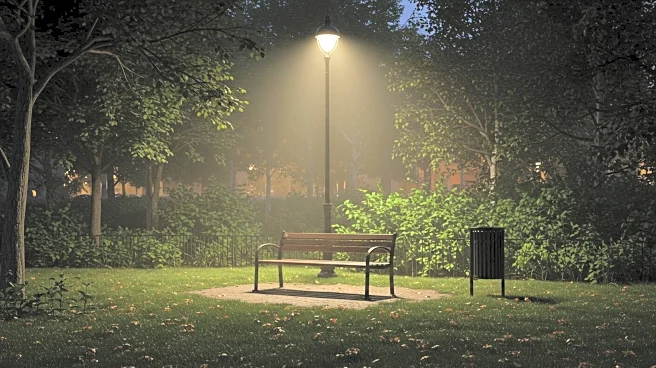What's Happening?
Recent data from the Survey Center on American Life highlights a significant increase in loneliness among middle-aged men in the United States. The survey indicates that 15% of men reported having no close friends in 2021, a stark rise from 3% in 1990. Additionally, the number of men with ten or more close friends has decreased from 33% to 13% over the same period. This trend is more pronounced among heterosexual men compared to their gay counterparts. The decline in male friendships is attributed to cultural shifts in masculinity, which discourage emotional vulnerability and social connections. The phenomenon is not limited to the U.S., as similar patterns are observed in Australia, where middle-aged men are reported to be the loneliest demographic.
Why It's Important?
The growing isolation among middle-aged men has significant public health implications. Studies consistently show that social deficits, including loneliness and poor-quality relationships, are linked to higher mortality rates. The lack of social connections can lead to mental health issues, including depression and suicidal thoughts. This trend underscores the need for societal changes to support male socialization and mental health. The issue also highlights the negative impact of traditional masculine norms, which discourage men from forming deep friendships. Addressing this loneliness epidemic is crucial for improving the overall well-being of men and reducing the associated health risks.
What's Next?
Efforts to combat male loneliness may involve creating new social infrastructures that encourage male friendships outside traditional settings like work and home. Community programs and initiatives that promote male bonding and emotional openness could be beneficial. Additionally, challenging and redefining traditional masculine norms to allow for greater emotional expression and vulnerability may help alleviate the loneliness experienced by many men. Policymakers and mental health professionals may need to collaborate to develop strategies that address this growing public health concern.
Beyond the Headlines
The loneliness epidemic among middle-aged men also raises questions about the broader cultural and societal changes that have contributed to this issue. The decline of 'third spaces' such as community centers and clubs, along with the rise of technology and targeted marketing, may have exacerbated the problem. These factors have created environments where men are less likely to form meaningful connections. Understanding and addressing these underlying causes is essential for developing effective solutions to combat male loneliness.












